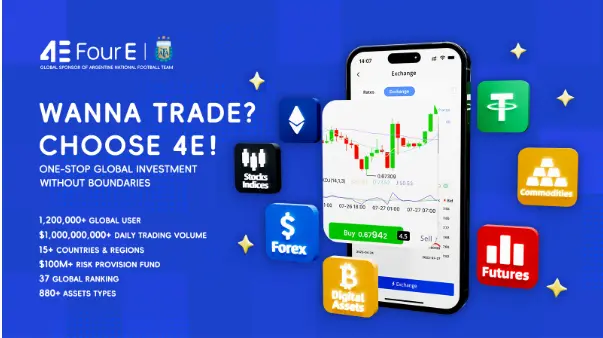Can Bitcoin still be bought for $100,000?
On November 22, the price of Bitcoin broke through the $99,000 mark, setting a new historical high, just one step away from the eagerly anticipated $100,000, with an increase of over 40% in two weeks. Since Trump won the U.S. presidential election on November 5, the market capitalization of the cryptocurrency market has increased by about $900 billion, becoming the focus of global financial markets.

Trump Becomes the "Cheerleader" of the Crypto World
The approach of Bitcoin to the historic high of $100,000 is largely attributed to optimistic market expectations. Trump's support for cryptocurrencies is seen as the biggest driving force behind the prosperity of the cryptocurrency market, signaling a shift towards more friendly regulatory policies for the crypto space in the U.S.
Reports indicate that Trump's team has begun exploring the possibility of establishing a position in the White House specifically responsible for digital asset policy, which would be the first of its kind in the U.S. and would maintain direct contact with the incoming president. These discussions follow the Trump Media Group's plan to acquire the crypto trading platform Bakkt and the launch of Bitcoin ETF options in the U.S., marking the latest boost in sentiment towards the digital asset market.
At the same time, news that SEC Chairman Gary Gensler will resign on January 20, 2025, has also sparked positive reactions in the market. Gensler's series of tough enforcement actions during his tenure at the SEC, which sought about $21 billion in fines, has drawn criticism from the crypto community. Trump has also made it clear during his campaign that he would replace the SEC chairman.

The Arrival of the Institutional Era
As Bitcoin's price continues to rise, the market's focus has shifted from "will it break $100,000" to "when will it break $100,000."
"Bitcoin whale" MicroStrategy announced today that it has raised $3 billion through the issuance of convertible senior notes for the continued purchase of Bitcoin. Since November, the company has raised $6.6 billion and purchased 78,000 new Bitcoins. Currently, MicroStrategy holds about 1.67% of the globally circulating Bitcoin, with its digital asset reserves valued at up to $31 billion. Thanks to this strategy, the company's stock price has surged by 750% this year.

MicroStrategy's success is attracting more companies to follow suit. Many companies are mimicking its successful experience by utilizing long-term zero-interest bonds for extremely low-cost, low-risk financing to purchase and accumulate BTC as a reserve asset.
In addition, the asset scale of Bitcoin spot ETFs in the U.S. is also rapidly growing. Data shows that after the November elections, 12 Bitcoin-related ETFs in the U.S. saw net inflows of $5.8 billion, with total assets surpassing $100 billion. These ETFs have cumulatively held over 1 million Bitcoins, further solidifying the dominance of institutional investors.

At the industry level, Trump's crypto-friendly stance not only impacts U.S. policy but also promotes the layout of crypto assets in countries around the world, potentially sparking competition among nations for the web3 industry.
Previously, Bitcoin's market was primarily driven by retail investors; now BTC has entered the institutional era, transitioning from a "speculative tool" to a "mainstream asset." The value of Bitcoin, with only 21 million coins available, as a safe-haven asset is becoming increasingly prominent.
Have Investors Already Missed the Opportunity?
The $100,000 price is not only a reflection of market enthusiasm but also a comprehensive manifestation of Bitcoin's long-term scarcity, global consensus, and value storage. For retail investors who have successfully held Bitcoin until now, they only need to sit back and enjoy the ride on the Bitcoin express train, allowing institutions and subsequent sovereign nations to drive the train forward as new momentum.
For those still on the sidelines, it may indeed deter many. However, the "high" and "low" of prices are essentially subjective, depending on investors' perceptions of its long-term value. Even if the current price seems high, it may just be a stage in the process of its value ascent. Historical data shows that as long as investors can hold long-term, the upward trend of Bitcoin often compensates for the risks of buying at short-term highs.

Of course, market changes are unpredictable, and predicting tops and bottoms is extremely challenging, especially since bull markets are often accompanied by sharp declines. For investors looking to enter the market, a dollar-cost averaging strategy is a more ideal approach. Regardless of market fluctuations, investing fixed amounts at regular intervals allows for more units to be bought at lower prices and fewer units at higher prices, smoothing overall investment costs and reducing reliance on market timing. Over time and with market recovery, assets may experience exponential growth.
4E, as the official partner of the Argentine national team, supports spot and contract trading of over 200 cryptocurrencies, including Bitcoin and Ethereum, covering various sectors with high liquidity and low fees, and has specifically launched a dollar-cost averaging feature to provide investors with a simple yet efficient investment method.

Additionally, 4E integrates traditional financial assets into the platform, establishing a comprehensive one-stop trading system that covers everything from deposits to crypto assets, as well as U.S. stocks, indices, forex, and bulk gold, with over 600 different risk-level assets available for investment with just USDT. Furthermore, 4E has set up a $100 million risk protection fund, adding another layer of security for users' funds. With 4E, investors can stay in tune with market dynamics, flexibly adjust strategies and allocations, and seize every potential opportunity.









